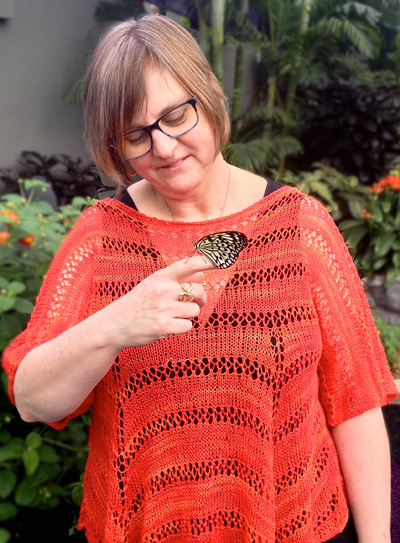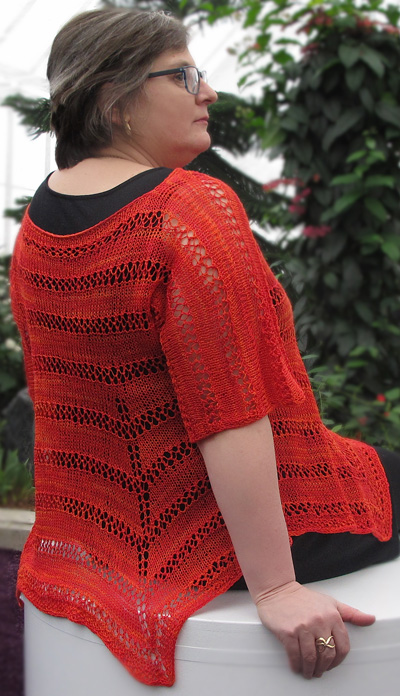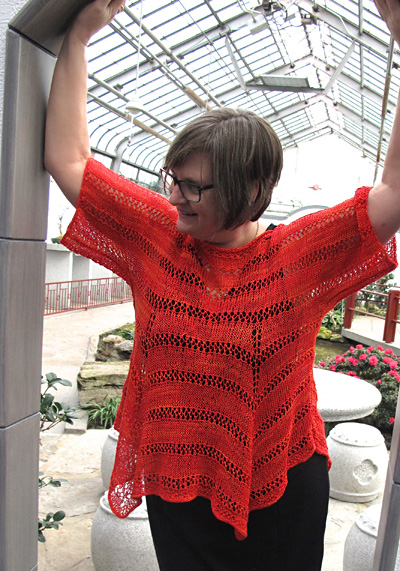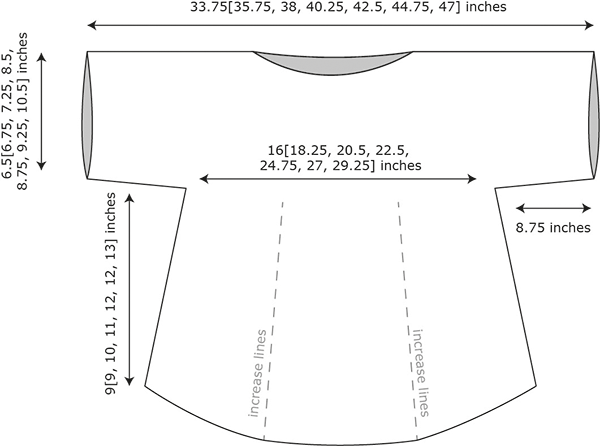

|
|
|
|||
I'm sad to announce that this will be my last regularly-scheduled column for Knitty. Although I plan to continue to submit stories and patterns to Knitty, I'm not able to commit to having something ready for every single issue. I've been honored to be a part of the Knitty community for the past several years and to be able to share my stories, essays, dreams, and designs with you every season. For my last official Ethnic Knitting Adventures column, I'd like to leave you with an essay about one of my favorite places in the world: Lithuania.
One of the best things I discovered in Lithuania is linen. Although my favorite fiber, wool, is hugely popular for knitting in America and many other places, it isn't appropriate for every project. Some people are allergic to wool. Some prefer not to wear fibers made from animal fur. Some live in warm climates where wool is uncomfortably hot. Others enjoy knitting with and wearing different kinds of fibers for different projects and situations. Still others, myself included, have hot flashes and find that they can't wear their favorite wool sweaters any more, except during the dead of winter.
Resources |
|||

If you've never knit with linen before, I suggest using very slippery needles and not trying to pull the stitches tight. I used a US size 6 needle on this sweater where I may have used a size 7 or 8 needle with wool yarn to get the same gauge. I found that knitting looser on slippery needles makes knitting with linen much more enjoyable and less stressful on my hands. |
|||
SIZE |
|
Notions GAUGE |
 [Knitty's list of standard abbreviations and techniques can be found here.] This sweater is made from the top down in one piece and worked back and forth. The back is worked first, then the front is picked up at the shoulders with stitches cast on in the center for the boat neck. Both pieces are the same except for the cast on. Short-row shaping is used at the underarms, then the sleeve and underarm stitches are put on hold. Increases are worked to create the points at the hem. When the knitting is complete, the held stitches are returned to needles, stitches are picked up along the sides of the bottom and the side seams are joined with 3-needle bind off. I-cord Selvage (worked on sleeves) Slip Stitch Selvage (worked on lower body) Stockinette and Lace Stripes (Worked over an even number of sts.) Seed Stitch I-cord Bind Off |
|
DIRECTIONS |
 Using the cable cast-on technique, CO 122[130, 138, 146, 154, 162, 170] sts. [**] Note: The removable markers will remain on the row on CO edge to indicate placement for picking up stitches on the front. Row 2 (RS): Work I-cord selvage, sm, beg with Row 3 work Stockinette and Lace Stripes to marker, sm, work I-cord selvage. Cont in patt as established until 3[3, 3, 4, 4, 4, 5] repeats of Stockinette and Lace Stripes have been completed. Work 2[4, 6, 2, 4, 6, 2] rows in St st. On the next row, markers will be placed for Sleeves and Lower Body Shaping - contrast colors will be helpful. Next Row: Knit across 32 sleeve sts, pm for Sleeve, work 17[19, 21, 23, 25, 27, 29] sts in patt, pm for Shaping, work 24[28, 32, 36, 40, 44, 48] sts in patt, pm for Shaping, work 17[19, 21, 23, 25, 27, 29] sts in patt, pm for Sleeve, knit across 32 sleeve sts. Cont in Stockinette and Lace Stripe patt as set, with slip stitch selvage, and work Underarm Shaping and Lower Body Shaping AT THE SAME TIME. Underarm Shaping Next row: Work to 1 st before previous wrapped st, w&t.  Lower Body Shaping Continue with Lower Body Shaping until piece measures 9[9, 10, 11, 12, 12, 13] inches at side seam, ending on Row 14. Work 4 rows of Seed st while cont to inc on RS rows. Work I-cord BO. Front Work as for Back from [**]. FINISHINGOn right edge of Front with RS facing and beg at lower edge, pick up and knit 1 st in each chain along side edge of lower body, then slip held Sleeve sts onto same needle. Purl 1 WS row, working wraps with their corresponding sts at underarm. On corresponding side of Back, with RS facing and beg at sleeve edge, slip held sts onto second circular needle, then pick up and knit 1 st in each chain along side edge. Purl 1 WS row, working wraps with their corresponding sts at underarm. With RS together, use larger needle and 3-needle BO to join side seam, working loosely. Repeat seam on opposite side. Weave in ends. |
 |
| ABOUT THE DESIGNERS |
 Visit Donna's website at sheeptoshawl.com. |
| Pattern & images © 2015 Donna Druchunas. All rights reserved. Contact Donna |